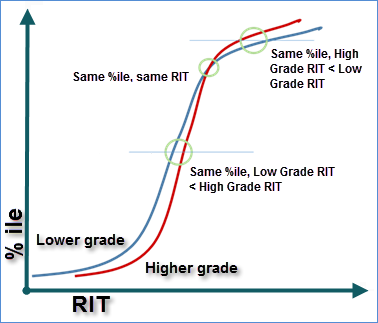A percentile rank indicates how well a student performed in comparison to the students in the specific norm group, for example, in the same grade and subject. A student's percentile rank indicates that the student scored as well as, or better than, the percent of students in the norm group. For example, a student scoring at the 35th percentile scored as well as, or better than, 35 percent of students in the norm group. It also means that 65 percent of the students in the norm group exceeded this score.
The percentile rank is not a percentage of items the student answered correctly.
See
Which reports show percentiles?
Can I use the percentile rank to monitor growth or compare students in different grades?
The percentile rank is helpful for reporting achievement status, but is not a good metric for comparing two students in two different norm groups, or for calculating a student's growth. You cannot confidently make inferences about a student's growth based solely on their percentile rank over time. For example, it is possible (though unlikely) that two students in two different grades - or the same student tested in two different years - have the same score and the same percentile, especially if you calculate percentiles for an individual school or district (instead of using the NWEA norm percentiles).
See the following
hypothetical RIT distributions for two different grades:
 See also
See also:



